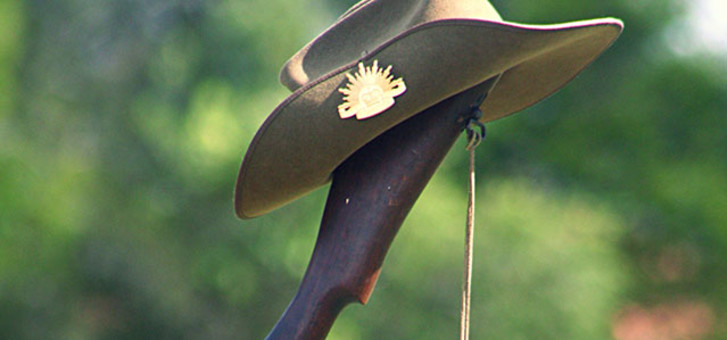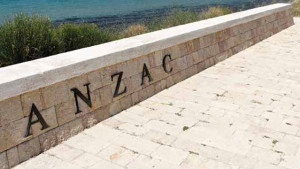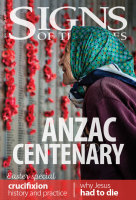It is a commonplace idea that nation Australia was born on the shores of Gallipoli on April 25, 1915, although many historians argue that it is misplaced.
What is true, from reading the diaries of men who landed at Gallipoli that day, is that they themselves felt that they had done something important in the history of Australia, and that the country would never be the same again for their having done so. Alongside the terror, tragedy and confusion of that first day, they recorded the landings with pride, feeling that Australia had finally made its mark on the world and that other nations now would sit up and take notice.
The ANZACs—now generically referred to as Anzacs—reflected what was widely believed at the time. Many Australians, from poets to prime ministers, felt that there was a vital element lacking in the country’s narrative of nation-building. Federation in 1901 was accomplished through political actions and they felt that any self-respecting state should be born of a heroic struggle for its independence. The USA had its War of Independence, France its legendary revolution and Britain a long catalogue of wars of survival and conquest. Australia had . . . several referendums. It was underwhelming.
Many forget that in fact, Australians had been involved in several wars already, including the New Zealand Land Wars, the Sudan War, the Boer War and the Boxer Rebellion in China, not to mention the extended domestic frontier conflicts between expanding European settlements and indigenous Australians, all of which are so often overlooked, even in our own history.
Once the news of the landings at Anzac Cove were published in Australia, federal and state governments acted quickly to ensure the story would not be forgotten, even introducing it immediately into the school curriculum. War stories became a staple of the mass media. The first Australian Gallipoli movie was screened in July 1915—while the Anzacs were still at Gallipoli—and many of its cast were soldiers-in-training who, in just a few months, would end up at Gallipoli as well.
After the war was over, however, there was a tendency to try to forget. Many did not want to memorialise a conflict that had inflicted tragedy on tens of thousands of Australian families and left many more with the daily reminder of its horrors in the form of traumatised and maimed family members. There was also great debate over how the war should be remembered: many returned soldiers wanted Australia to become a socialist-leaning republic, while others were adamant on retaining the British imperial link. Disagreement spilled into street battles between rival factions in the inter-war years.
Today, the Anzac legend is such a stable and unifying narrative that it is hard to imagine that for some time, the Anzac legacy was deeply divisive. Yet even as recently as the era of the Vietnam War, Anzac Day was contested and many felt that its memorial services would fade away.
However, the revival of Australian nationalism in the 1970s saw a resurgence in the Anzac legend, driven in part by strong sentiment around the passing of the last original Anzacs. With none surviving, it became easier to idealise and mythologise their story. The Anzac adopted the key features of earlier Australian archetypes, such as the convict, bushranger, bush battler and gold digger, rolled in together with the qualities of being a self-educated, self-reliant, practical, irreverent, loyal and unpretentious underdog, bushman warrior.
Many secular commentators have noted that “Anzac” has become our new national secular religion, complete with its national feast day (Anzac Day), national church (the cathedral-like War Memorial in Canberra facing directly on to Parliament House), local shrines (war memorials and RSL clubs) and its own dogma consisting of popular beliefs about what the Anzacs were like.
It seems odd that in a country fiercely resistant to institutions—especially formal religion—that we should celebrate the anti-institutional tendencies of Australian soldiers by evolving an increasingly institutionalised way of remembering and honouring them. Many of the original Anzacs would be astonished, and perhaps even a little put out, to see the way in which they have been idealised and idolised—they were, after all, famously irreverent themselves. A great many Anzacs refused ever to participate in Anzac Day ceremonies or other memorial activities.
Australia has fashioned its national identity largely out of the raw material of Anzac. Naturally, the Anzacs themselves were a varied lot: like any other cross-section of men, there were heroes and villains. Weaklings, cowards, incompetents and mediocrities rubbed shoulders with good, decent men and a fair share of truly amazing individuals.
As is typical of myth-making in all humanity, the national collective memory has selected the noble and useful qualities, editing out the lesser ones as unrepresentative of how we wish to see ourselves. We need an ideal to pursue, a narrative of heroic sacrifice on behalf of others, and Australians have manufactured theirs from the flawed and varied stories of Anzac.
Yet there is another narrative—much older—that offers the same high ideals based on sacrifice for the benefit of others: the Christian story. This story hasn’t seen fit to edit and clean up its central cast. Any reading of the Gospels, and the rest of the Bible, shows its chief characters to have been people with the full range of human virtues and weaknesses. It is only in the person of Jesus, the Son of God, that the flawless Human is presented, and only through His sacrifice that humans can truly be rescued.
And Anzac Day centenary commemorations offer us an opportunity to consider Whom it is we truly worship.







